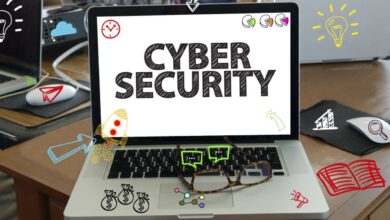10 Must-Read Cybersecurity Books for Beginners and Experts Alike

The field of cybersecurity is dynamic and competitive, and it is important to stay up to date to combat new threats and integrate advanced technologies. Thus, it can be seen that being able to learn continuously is important to being on top of things. Here is the list of top 10 essential cybersecurity books that everyone, no matter whether a newbie or experienced should read since they cover various sides of cybersecurity, ethical hacking, and information security.
1. “The Art of Invisibility” by Kevin Mitnick
Overview: By the man who is widely known as the world’s most notorious hacker Kevin Mitnick, this book gives realistic information on how one can conduct him/herself to avoid being identified by hackers.
– Strategies that can help you prevent your Internet activity from being tracked.
– Practical incidence of privacy violation.
– Tips for the people who want to protect their personal information and be safe from such an identity theft.
There are very few credibility issues with this book as Mitnick’s Coming of Age as a Hacker getting this kind of exposure is very realistic and the tips that Mitnick offer here are practical when it comes to preserving privacy in the information age.
2. “Cybersecurity Essentials” by Charles J. Brooks
Due to its simplicity and the provision of techniques that are easy to follow especially in the initial chapters of the book, this book is recommendable to beginners in the cybersecurity field.
– Introduction to cybersecurity concepts: Cybersecurity principles.
– Security threats, and threat agents: In this case, we need to consider comprehensive information on security threats, and vulnerabilities.
– Recommendations on how to engage an organized security to manage the social engineering threat.
It is designed actually for beginners who are willing to pursue a cyber security course.
3. “Hacking: The Art of Exploitation” by Jon Erickson
If you’re looking for an in-depth guide on how hacking works, this is a great read; it isn’t a slacker book — it is filled with practical exercises and examples.
– Explanation of hacking techniques and proposed changes are provided in detail.
– It is more practical in nature where different practical sessions are conducted in order to ensure effective learning.
– The young man’s revelations Small and Jeffrey’s article provides insightful exposure into the hacker’s mindset.
Due to the eminent methodology marked by theoretical concepts accompanied by practical cases by Erickson, this book is a real must-have for every future ethical hacker.
4. “The Web Application Hacker’s Handbook” by Dafydd Stuttard and Marcus Pinto
This book on web application security covers the necessary knowledge of the threats and countermeasures.
– Web communication and testing in application development.
– Here the author describes some common vulnerabilities which can be used and how it is possible to exploit them.
– An ineffective manner of securing web applications is.
If you are into web application security, either as a designer/developer, a security auditor, a penetration tester or any other role in supporting/assuring web security, this book has a wealth of information for you.
5. “Security Engineering: A Guide to Building Dependable Distributed Systems” by Ross J. Anderson
It highlights many of the key principles in constructing secure systems and the experiences of the authors offer explanations and examples of best practices.
– The coverage of the aspects of security engineering and all the various principles in it.
– Real-life examples of security concerns that have occurred in the real world.
– Measures that can be undertaken while developing security architecture.
By detailing a range of examples and offering actionable tips, the work becomes invaluable for anyone to turn to when working on system design and security.
6. “Metasploit: The Penetration Tester’s Guide” by David Kennedy, Jim O’Gorman, Devon Kearns, and Mati Aharoni
Advanced tutorials for the Metasploit framework- an essential resource in the field of penetration testing.
– Guides on how to use Metasploit in simple procedures which are illustrated in detail.
– Currently, there are various methods people use to take the opportunity of security flaws.
– Live simulation environment- The next realistic penetration testing environment is the live simulation environment, also known as the targeted examination environment, which involves examining a selected organization’s network or system.
For penetration testers, this book is yet valuable because it provides a complete guide on mastering one of the most used tools in the industry
7. “Practical Malware Analysis: The Hands-On Guide to Dissecting Malicious Software by Michael Sikorski and Andrew Honig
Categorized in the ‘Computer Science’ genre, this book provides a practical guide to a definite systematic dissection of malware.
– Techniques for reverse
-Engineering malware
– That is how different tools and methodologies can be employed to detect and analyze malware.
– Cooper (1996) has discussed case studies and practical exercises to be included in the course environment.
It is certainly worthy to read for anybody who wants to know how malware functions and who wants to start the path of learning malware analysis.
8. “Blue Team Handbook: Incident Response Edition” by Don Murdoch
Overview:
It is a comprehensive, real-life based reference for anyone dealing with security incident handling and incident response.
– The best practices and general strategies on how to act during an incident.
– Methods of possibility threat identification and elimination.
– There are several real-world incident response scenarios reported in the literature, and for the sake of practicality, some can be described briefly as follows:
This book also serves as a compact and efficient handbook for security professionals who need to handle incidents
9. “Network Security Essentials: Computer Organization and Architecture” by William Stallings
This book carries information regarding the concepts and standards involved in the field of network security.
– General of cryptographic methods.
– The use of network security protocols and applications.
– Communication is a critical component necessary for the development of secure networks; therefore, there are several approaches aiming at enhancing the security of network communications.
Certainly, Stallings’ lucid generalized text about the theme contributes to this publication’s effectiveness and could be helpful for readers of different levels – students and professionals.
10. “The Phoenix Project: A Novel About IT, DevOps, and Helping Your Business Win” by Gene Kim, Kevin Behr, and George Spafford
An IT-related novel that gives readers a glimpse into business as context for software and DevOps.
– These are just some of the key IT operations difficulties that need to be understood in order to determine how they can be overcome through process automation.
– Fundamental Concepts of DevOps and the culture of the continuous learning process.
– The Information Technology (IT) is an important aspect that runs through almost every organization and it plays a crucial role in addressing various challenges within an organization.
It is not a standard cybersecurity book, yet it is quite helpful because it shows how to practice DevOps while considering security challenges, which is critical in contemporary IT environments.



